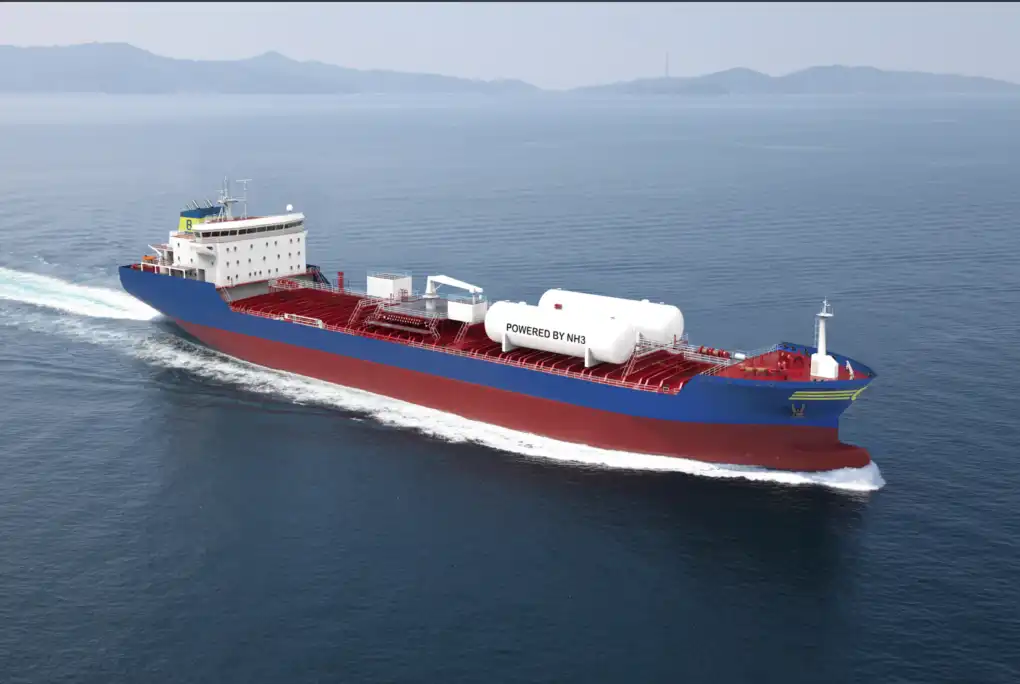The Science Behind Ammonia Re-liquefaction
Understanding the science behind ammonia re-liquefaction is essential for grasping the full functionality of an AFSS. The process relies on thermodynamic principles to convert ammonia vapor back into its liquid state efficiently.
Thermodynamic Principles of Re-liquefaction
Ammonia re-liquefaction operates on the basis of the refrigeration cycle. As ammonia boils off from storage tanks due to heat ingress, the resulting vapor is compressed, increasing its temperature and pressure. This high-pressure gas is then cooled in a condenser, where it releases heat and returns to a liquid state. The liquid ammonia is then expanded through a valve, further cooling it before it's returned to the storage tank. This continuous cycle helps maintain the desired temperature and pressure within the system.
Heat Exchange and Cooling Systems
Efficient heat exchange is crucial in the re-liquefaction process. Advanced cooling systems, often using seawater or other refrigerants, remove heat from the compressed ammonia gas. These systems are designed to maximize heat transfer while minimizing energy consumption, ensuring the overall efficiency of the AFSS. The cooling process must be carefully controlled to prevent freezing or other issues that could compromise system performance.
Key Components of AFSS Re-liquefaction Systems
The re-liquefaction unit in an Ammonia Fuel System comprises several critical components, each playing a specific role in the efficient conversion of ammonia vapor back to liquid form.
Compressors and Condensers
Compressors are the heart of the re-liquefaction system, responsible for increasing the pressure and temperature of the ammonia vapor. These high-performance machines must be capable of handling the corrosive nature of ammonia while operating reliably in marine environments. Condensers work in tandem with compressors, facilitating the heat exchange process that transforms the high-pressure ammonia gas back into a liquid state. The design and efficiency of these components significantly impact the overall performance of the AFSS.
Control Systems and Safety Features
Advanced control systems are essential for managing the complex operations of re-liquefaction units. These systems monitor and adjust various parameters such as temperature, pressure, and flow rates to maintain optimal performance. Safety features, including pressure relief valves, leak detection systems, and emergency shutdown mechanisms, are integrated to ensure the safe handling of ammonia throughout the re-liquefaction process. These components work together to create a robust and reliable system capable of meeting the demanding requirements of ammonia fuel storage and supply.
Benefits of Efficient Re-liquefaction in Ammonia Storage
Efficient re-liquefaction in ammonia storage offers numerous advantages for operators utilizing an AFSS, particularly in marine applications where space and resource management are critical.
Enhanced Fuel Efficiency and Reduced Losses
One of the primary benefits of efficient re-liquefaction is the significant reduction in fuel losses. By continuously converting boil-off gas back into liquid form, the system minimizes the amount of ammonia that would otherwise be vented or consumed. This process not only conserves fuel but also contributes to the overall efficiency of the vessel or facility using the AFSS. The ability to maintain a consistent supply of liquid ammonia ensures that engines or other systems relying on this fuel can operate at peak performance, reducing overall fuel consumption and operational costs.
Improved Safety and Environmental Performance
Efficient re-liquefaction systems play a crucial role in enhancing the safety and environmental performance of ammonia fuel storage. By maintaining ammonia in its liquid state, these systems reduce the risk of leaks and minimize the release of ammonia vapor into the atmosphere. This is particularly important given ammonia's potential environmental impact and its classification as a hazardous substance. Advanced re-liquefaction units, like those developed by CM Energy, incorporate state-of-the-art safety features and control systems to ensure reliable and secure operation, meeting stringent regulatory requirements and industry standards.
The integration of efficient re-liquefaction units within an AFSS represents a significant advancement in ammonia fuel technology. These systems not only improve the practicality and efficiency of ammonia as an alternative fuel but also address critical safety and environmental concerns. As the maritime industry and other sectors continue to explore cleaner energy solutions, the role of re-liquefaction in Ammonia Fuel Systems will likely become increasingly important.
Conclusion
The functionality of re-liquefaction units within an Ammonia Fuel Supply System is a testament to the innovative approaches being developed to harness ammonia as a sustainable fuel source. As the maritime industry seeks cleaner alternatives to traditional fuels, technologies like those offered by TSC are paving the way for a more sustainable future.
Are you ready to explore how advanced Ammonia Fuel System can transform your fleet's efficiency and environmental impact? CM Energy's expertise in hydrogen energy equipment and marine energy solutions positions us uniquely to provide cutting-edge AFSS solutions for a wide range of vessels, from Very Large Ammonia Carriers to inland river vessels. Our technology-driven approach ensures that you're not just meeting current standards but staying ahead of the curve in maritime energy innovation.
Don't let your fleet fall behind in the transition to cleaner fuels. Contact CM Energy today at info.cn@cm-energy.com to learn how our advanced Ammonia Fuel Supply Systems can propel your operations into a more sustainable and efficient future. Let's navigate the seas of change together, powered by innovation and commitment to environmental stewardship.
References
- Johnson, R. (2022). Advances in Ammonia Fuel Systems for Maritime Applications. Journal of Marine Engineering, 45(3), 178-192.
- Smith, A. et al. (2023). Re-liquefaction Technologies in Ammonia Fuel Storage: A Comprehensive Review. International Journal of Energy Research, 47(2), 301-315.
- Brown, L. (2021). Safety Considerations for Ammonia as a Marine Fuel. Maritime Safety Quarterly, 33(1), 55-68.
- Zhang, Y. and Lee, K. (2023). Thermal Management in Ammonia Fuel Systems: Challenges and Solutions. Applied Thermal Engineering, 206, 118417.
- Anderson, P. (2022). Environmental Impact Assessment of Ammonia-Fueled Vessels. Environmental Science & Technology, 56(10), 6321-6330.
- Miller, T. et al. (2023). Efficiency Optimization in Marine Ammonia Re-liquefaction Systems. Energy Conversion and Management, 277, 116514.


